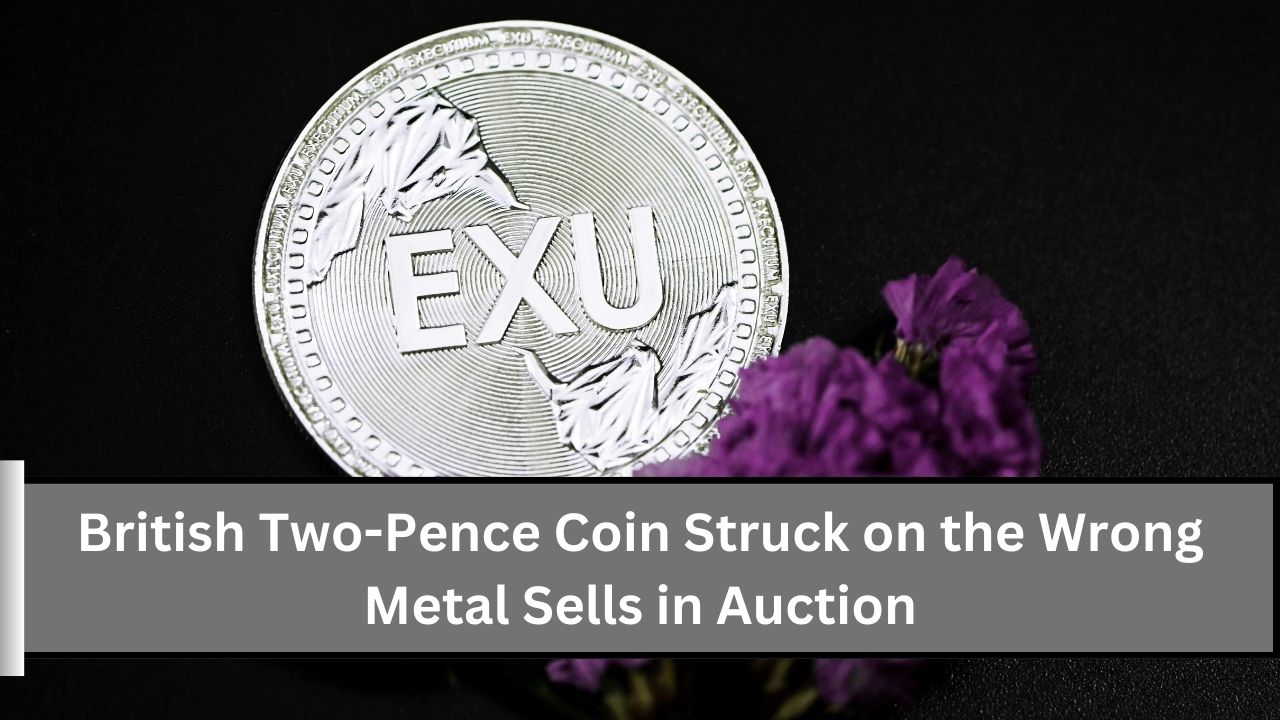Coin collecting is a fascinating hobby that attracts many enthusiasts, especially when it involves rare finds and interesting mistakes. Recently, a British two-pence coin made headlines because it was struck on the wrong metal. This unusual minting error sold at auction for a surprising amount, catching the attention of collectors and the public alike. In this article, we will discuss the British two-pence coin’s history, the story behind this rare error, why such coins are valuable, and tips for anyone interested in collecting error coins.
The British Two-Pence Coin: A Brief History
The British two-pence coin, often called the “2p coin,” was introduced in 1971 as part of a major change in the UK’s currency system. This change, known as decimalization, shifted the currency from the old system of pounds, shillings, and pence to a simpler system where one pound equals 100 pence.
On the front side of the 2p coin, there is a portrait of the reigning monarch. Until 2022, this was Queen Elizabeth II. The back of the coin features a design that usually includes the Badge of the Prince of Wales, which is a plume of feathers encircled by a coronet, along with the motto “Ich Dien,” meaning “I serve.”
Traditionally, the two-pence coin is made of a copper-plated steel core, which replaced the earlier bronze composition in 1992. However, sometimes errors occur during the minting process, leading to coins being struck on the wrong type of metal.
The Story Behind the Error: Two-Pence Struck on the Wrong Metal
The two-pence coin that gained attention recently was not made from the usual copper-plated steel. Instead, it was struck on a nickel-brass planchet, which is the metal used for some other British coins like the 10p or pound coins. This kind of mistake is called a “wrong planchet error.”
These errors can happen when the blanks of different metals (called planchets) get mixed up during production. Although the Royal Mint, which makes British coins, has strict quality control, sometimes these errors still occur. Because they are so rare, coins struck on the wrong metal are highly valuable to collectors.
Why Are Error Coins So Valuable?
Error coins can be worth much more than their face value for several reasons:
1. Rarity
Minting errors like this two-pence coin are very rare. They often go unnoticed and may be destroyed before reaching the public. The fewer there are, the more valuable they become.
2. Historical Significance
Error coins tell us something about the minting process and the rare mistakes that happen. Collectors often find these stories intriguing and want to own a piece of that history.
3. Collector Demand
Some collectors specialize in error coins. They look for unique pieces, and because these errors are scarce, the demand can drive up their value at auction.
4. Condition
The state of the coin affects its value. Coins that are in excellent condition, without much wear, are worth more. Error coins that are well-preserved can sell for even higher prices.
The Auction of the Rare Two-Pence Error Coin
The British two-pence coin struck on the wrong metal recently sold at auction for a significant amount of money. While the exact price wasn’t disclosed, it is known that the coin attracted a lot of interest from collectors and investors, eventually selling for thousands of pounds. This shows just how appealing error coins are to collectors.
The Auction Process
When such rare error coins are sold at auction, they are usually presented by trusted auction houses that specialize in coins. Experts thoroughly inspect and authenticate the coin to confirm it is genuine. Once confirmed, it is listed in an auction catalog and promoted to potential buyers.
At the auction, collectors and investors bid on the coin. The rarity and uniqueness often lead to intense bidding wars, which can significantly increase the final sale price. The two-pence coin in question was highly sought after and received attention from various bidders.
The Appeal of Error Coins in Numismatics
Error coins are a special part of numismatics, the study and collection of coins. While many collectors focus on regular coins, more and more are drawn to unique and unusual pieces. Error coins like the two-pence struck on the wrong metal are especially interesting because they stand out from standard coins.
Types of Error Coins
There are several different types of error coins that collectors look for:
- Wrong Planchet Errors: These occur when a coin is struck on a metal blank intended for a different denomination.
- Double-Struck Coins: These coins are struck more than once, causing a “double image” effect. They are highly desirable among collectors.
- Off-Center Strikes: Sometimes, a coin is struck off-center, making part of the design missing. These coins are also considered valuable errors.
- Clipped Planchets: This error happens when a coin is struck on a blank that was not fully cut out, leading to a piece being “clipped” off.
- Die Errors: These occur when there is a flaw in the die used to strike the coin, which can lead to unusual designs or marks.
Each type of error adds excitement to collecting and can increase a coin’s potential value.
Why Collect Error Coins?
Collecting error coins allows enthusiasts to own unique pieces of numismatic history. These coins are often one-of-a-kind and can spark interesting conversations. The hunt for error coins can be thrilling, as they are not always easy to find and can diversify a collection.
Additionally, error coins often gain value over time, especially if they are kept in good condition and remain rare. Collectors who invest in these coins may see significant returns if they decide to sell them in the future.
How to Spot an Error Coin
If you’re interested in collecting error coins, it’s essential to know how to spot them. Here are some helpful tips:
- Examine the Metal: Check the material of the coin. If it seems different from usual, it might be a wrong planchet error.
- Check the Design: Look for any unusual aspects in the design, such as missing parts or double images.
- Weigh the Coin: If it feels lighter or heavier than expected, it might have been struck on the wrong planchet or have another error.
- Compare with Standard Coins: Look at a regular version of the coin. Any noticeable differences in design, size, or weight might indicate an error.
- Seek Expert Opinions: If you think you have found an error coin, consulting with a numismatic expert can confirm whether it is genuine and help determine its value.
Conclusion
The sale of the British two-pence coin struck on the wrong metal highlights the exciting world of error coins and their incredible value. For collectors, finding an error coin can be a significant event, offering historical interest and the chance for financial gain.
Error coins, such as the two-pence mule, provide insight into the minting process and remind us that mistakes can occur even in controlled environments. These errors are what make error coins so desirable among collectors.
If you’re interested in coin collecting, especially in the unique area of error coins, now is a great time to explore this fascinating market. Whether you’re starting a collection or adding to one, look out for these rare treasures. They could be worth much more than their face value.
FAQs
What is a British two-pence coin?
The British two-pence coin, commonly known as the “2p coin,” was introduced in 1971 during the decimalization of British currency. It features a portrait of the reigning monarch on the front and various designs on the back, typically the Badge of the Prince of Wales. The coin is traditionally made of copper-plated steel.
What does it mean for a coin to be struck on the wrong metal?
When a coin is struck on the wrong metal, it means it was minted using a metal planchet (the blank used to create coins) intended for a different denomination or type of coin. For example, the British two-pence coin recently sold was struck on a nickel-brass planchet instead of the usual copper-plated steel. This minting error makes the coin unique and highly sought after by collectors.
Why are error coins valuable?
Error coins are valuable primarily due to their rarity. Mistakes in minting are infrequent, and many error coins go unnoticed or are destroyed. Additionally, they provide historical significance and intrigue, attracting collectors who specialize in unusual items. The condition of the coin also plays a role in its value, with well-preserved pieces fetching higher prices at auctions.
How can I tell if I have an error coin?
To identify an error coin, examine the metal composition, design, and weight. If the coin seems to be made from a different material, or if there are unusual features like missing elements or off-center strikes, it may be an error coin. Comparing it with standard versions of the same coin can help you spot differences. Consulting a numismatic expert for appraisal can also confirm its status.
Where can I find error coins for my collection?
You can find error coins at various places, including coin shops, numismatic shows, online auction sites, and specialty auctions focused on rare coins. Joining coin collecting clubs or online communities can also help you connect with other collectors who may have error coins available for sale or trade.

